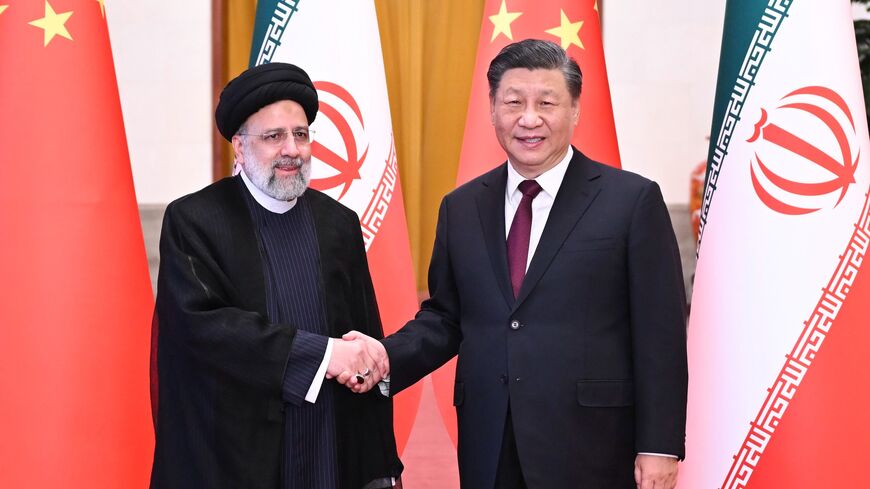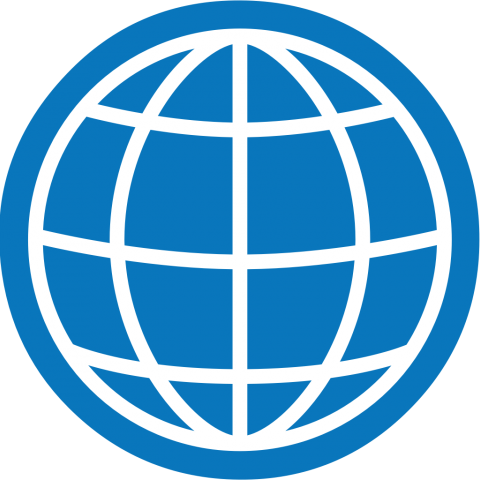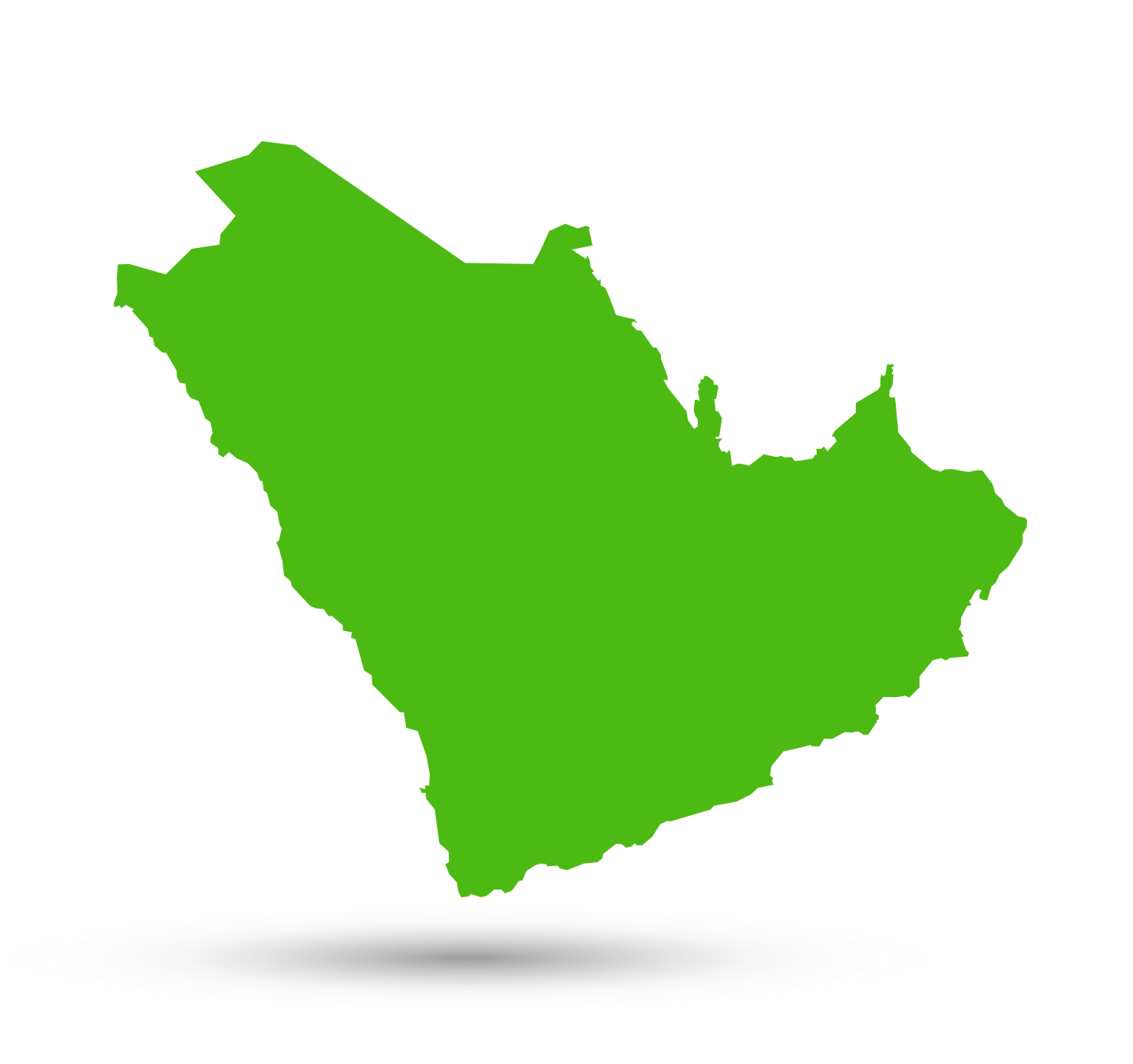When President Ebrahim Raisi departed for his landmark visit to China last Tuesday, the first in 20 years for an Iranian president, he stood in front of a large map of Iran with the words “Persian Gulf” written in English and Persian marking the body of water south of Iran’s borders.
For Iran watchers, the message was clear. Just two months prior, China's President Xi Jinping and members of the Gulf Cooperation Council signed a joint statement calling for a “peaceful resolution” between Iran and the United Arab Emirates of three islands — Greater Tunb, Lesser Tunb, Abu Musa — in the Persian Gulf currently in control of Iran. The statement clearly irked Iranian authorities, which subsequently summoned the Chinese envoy, a very rare rebuke of an ally Iran is currently leaning toward as it pivots east. Raisi was signaling — both domestically and to Chinese officials — that whatever necessities the country has pushed forward with the eastern pivot, there are issues that are non-negotiable for the Islamic Republic.
Iran's shift toward the east, however, has nothing to do with three mostly uninhabited islands located near the strategically important Strait of Hormuz, and has everything to do with realizing economic goals from an Eastern ally as investment and trade with Western countries have continued to diminish over the near full collapse of the Joint Comprehensive Plan of Action due to the US exit in 2018. Raisi’s three-day visit, according to government supporters, was aimed to help implement the Iran-China 25-year Comprehensive Strategic Partnership, an ambitious plan that would bring in hundreds of billions of dollars of investments into Iran with Iranian oil going to China at a discount. Iran’s overall trade with China in 2020 was close to $15 billion, while US-China trade in 2020 was $615 billion.
Whether or not details of the economic pact — some of which have been leaked — ever materialize, supporters have touted the visit more for its symbolism rather than the details. Twenty years ago, President Mohammad Khatami was the last Iranian president to be invited to China on an official visit, the previous meetings between an Iranian and Chinese president took place on the sidelines of regional meetings of the heads of states. Government supporters say that the visit alone signals Iran’s importance in the region.
The visit also signals that China has not sidestepped Iran in favor of the Arab countries in the Persian Gulf, according to government supporters. China’s trade volume with Saudi Arabia alone is significantly higher than trade with Iran. In 2020, China’s trade with Saudi Arabia was $65 billion. What’s more, Saudi-China trade is growing at a faster rate than Iran-China trade, because Saudi Arabia is not under any US sanctions and China is not forced to navigate a maze of ever-increasing and tightening US Treasury designations as it must with Iran. When viewed collectively, and if ever China were forced to choose, the trade with Iran and future economic prospects are negligible, regardless of what Iranian analysts might think of their geopolitical significance. Still China is Iran’s biggest oil customer and the president’s visit aims to maintain that status, among other economic goals.
According to Majidreza Harriri, president of the Iran-China Joint Chamber of Commerce and Industries, the main objective of Raisi’s visit was to sign contracts based on the 25-year cooperation plan. The 25-year cooperation plan is a document for Chinese investment, with estimates ranging up to $400 billion investment in Iran’s oil, gas and petrochemical sectors as well as manufacturing, agriculture and transportation. Harriri said that 15 contracts based on the outline of the 25-year plan have been signed, but the details cannot be shared at the moment. He added that the foreign minister would share specifics of the contracts at a later date. The state-run IRNA news agency said that the number of contracts was in fact 20. Harriri, who touted the historical Iran-China economic ties dating back to the Parthian Empire (247 B.C. - A.D. 224), conceded that current trade between the two countries is still “not ideal” and has potential to be two or three times higher. Interestingly, that number would still put Iran-China economic ties under Saudi-China economic ties.
Whatever the details of the contracts, the meeting from Iran’s perspective was about the future, rather than today. “Despite the opposition of enemies … Iran and China have taken large steps,” Raisi said, likely in reference to the United States and even possibly regional countries like Israel and Saudi Arabia. “Iran and China are friends in difficult times, and friendships forged in hard times, facilitate and accelerate ties in [future] days.”
While Raisi may be looking to the future, the country's economic realities today are only “difficult” for Iran. With the nuclear negotiations at a standstill, oil and banking sanctions in place, and with no immediate economic prospects, Iran’s leaders and public need specific proposals rather than promises of better days in the future.







